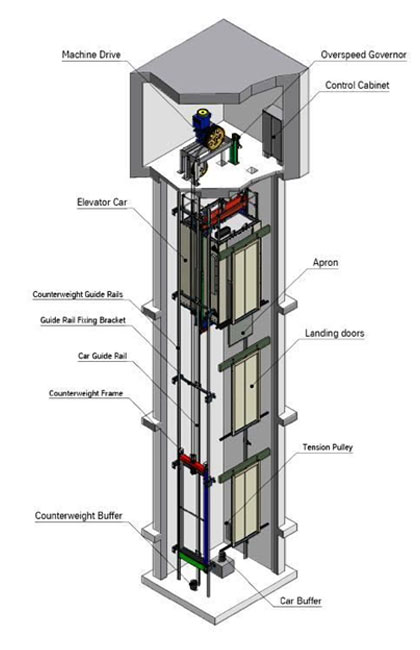Exploring the World of Lifts: Typical Issues Encountered by Different Lift Systems
As we navigate with the upright transport systems of contemporary structures, lifts stand out as an essential element of our day-to-day lives. From hydraulic lifts to traction systems and machine-room-less designs, each lift kind comes with its set of common issues.
Hydraulic Elevators
Hydraulic lifts, typically favored for low-rise structures, make use of fluid stress to control the movement of the elevator car (lift repair companies). This mechanism involves a hydraulic pump pushing oil into a cylinder, triggering the lift to relocate the desired direction. While hydraulic elevators are known for their peaceful and smooth operation, they do include their own set of typical problems
One widespread trouble with hydraulic elevators is oil leakage. Additionally, issues with the control system, such as faulty shutoffs or a malfunctioning pump, can trigger interruptions in the elevator's activity.
Normal upkeep and timely repair work are vital to guarantee the smooth functioning of hydraulic lifts. By attending to these usual problems proactively, building proprietors can lessen downtime and guarantee the safety and performance of their vertical transportation system.
Grip Elevators
When considering upright transportation systems in structures, one more common type apart from hydraulic elevators is the grip elevator. Grip elevators operate making use of a system of ropes and counterweights that relocate the elevator vehicle by clutching onto the hoist ropes. This system permits for smoother and quicker vertical transport compared to hydraulic systems.
Among the common concerns faced by grip elevators is rope wear. The consistent motion of the ropes within the grip system can result in tear and use over time, possibly triggering the elevator to malfunction or come to be risky for usage. Regular examinations and maintenance of the ropes are vital to make sure the lift's proper performance and safety and security.
One more concern that grip elevators might encounter is associated with the control system. Troubles with the control system can lead to problems such as unpredictable activity, hold-ups in action times, or also full closures. Normal testing and maintenance of the control system are crucial to stop such concerns and make sure the lift's integrity.
Machine-Room-Less (MRL) Lifts

One of the crucial components of MRL lifts is the portable gearless grip machine that is mounted within the hoistway. This device successfully drives the elevator vehicle without the demand for large devices discovered in typical grip elevators. Furthermore, MRL elevators normally use a weight system to balance the cars and truck, further boosting their energy effectiveness.
Despite their benefits, MRL lifts might face difficulties associated to repair and maintenance because of the constrained space for equipment setup. Availability for servicing parts within the shaft can be restricted, requiring specialized training for specialists. Appropriate upkeep timetables and normal inspections are essential to make sure the ongoing smooth procedure of MRL lifts.
Overloading and Weight Limitation Issues
Are lifts outfitted to handle excess weight loads efficiently and safely? Overloading and weight limit issues are important concerns in lift procedures. Lift suppliers layout raises with certain weight capabilities to make sure guest security and devices durability. Surpassing these weight limits can lead to various troubles, consisting of mechanical failures, hold-ups, and security risks.
When elevators are strained, it puts excessive pressure on the motor, cables, and various other parts, potentially creating breakdowns or breakdowns. Safety devices such as sensors and overload sensing units are in place to avoid elevators from relocating if they find excess weight. Additionally, going beyond weight limits can cause enhanced power usage and damage on the elevator system.
To minimize overloading concerns, building managers should prominently present weight limits in lifts and enlighten residents on the relevance of adhering to these constraints - lift repair companies. Regular upkeep checks by certified specialists can additionally aid guarantee that lifts are operating within risk-free weight criteria. visit here By dealing with overloading and weight limitation concerns proactively, building owners can improve lift safety and security and efficiency
Electrical System Failings
Surpassing weight restrictions in lifts can not only lead to mechanical issues but also possibly add to electrical system failures within go now the lift framework. Electric system failures are a vital issue in elevator procedure, as they can create unforeseen shutdowns, malfunctions, or even safety hazards.
Moreover, power rises or changes in the electrical supply can additionally interfere with the lift's procedure, impacting its performance and safety. These electric disturbances can harm delicate elevator parts such as control panels, motherboard, or sensors, resulting in system failings. Routine maintenance and examinations are vital to determine and resolve potential electric problems promptly, making sure the safe and reliable operation of lift systems. By adhering to weight restrictions and carrying out regular electrical system checks, structure owners can minimize the risk of electric failures in lifts.
Verdict

Hydraulic lifts, typically preferred for low-rise structures, utilize fluid stress to next page regulate the motion of the lift vehicle.When taking into consideration upright transportation systems in structures, another typical kind aside from hydraulic lifts is the grip elevator. Grip lifts operate utilizing a system of ropes and weights that relocate the elevator auto by gripping onto the hoist ropes. Unlike standard lifts that require a separate equipment room to house the devices, MRL lifts incorporate most of the elements within the shaft, removing the need for a specialized equipment room.In conclusion, elevators encounter usual problems such as hydraulic malfunctions, grip system failings, and electrical system issues.
Comments on “We Maintain Lifts with Precision: Ensuring Safety and Efficiency”